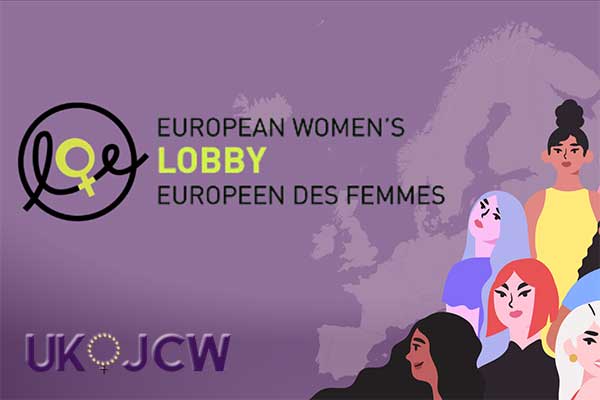The Work-Life Balance Package (Package) is expected to be launch by the commission at the end of March! Here is an opportunity to see what the EWL is doing and give feedback on the EWL’s position.
What is the Package:
The Package was initially announced after the Commission withdrew the Maternity Leave Directive (2015) which failed after almost seven years of negotiations. The Commission promised a “fresh start” and a “modern” proposal for “modern” times.
A public consultation was launched (online questionnaire) as the Social Partners (Trade Unions + Employers) were invited to negotiate the proposals based on the Commission’s Road Map for a new Package (2015). Negotiations between the Social Partners took place in two stages (2016) but failed to reach agreement. Therefore, it is now in the hands of the Commission to come forward with proposals. These are expected at the end of March this year and the Package has been announced as part of the European Pillar of Social Rights.
What can we expect in the Package?
In its Communication/Road Map on the Package (2015), the Commission underlined three possible options:
- Legislation: specifically on the possibility of a Paternity Leave Directive (which does not exist at EU level) ; proposals to improve the Maternity Leave Directive particularly with regards to breastfeeding and the period of protection against dismissal for women returning to work after child birth. Possible Carer’s leave directive.
- ‘Soft’ measures: guidelines regarding flexible working time, benchmarks, monitoring mechanisms (through the European Semester process), etc
- Mixture of both legislative and soft measures.
However, we understand that the final Package will not be very ambitious and it is unlikely that legislative measures will emerge. To help understand the complexity of the work-life balance situation, we have prepared a visual indicating the situation as it stands today with regards to various forms of leave that are currently available at European level and correspondingly the position of the EWL with regards to this situation since the work-life balance debate started in 2008. We hope these visuals are helpful.
What should the EWL’s position be today?
In light of the fact that it is unlikely that progressive legislation will be forthcoming, we propose:
1) Practical action: as a red line in direct dialogue with the Commission services, the EWL proposes the following:
Maternity leave: improvements to the 1992 Directive (other languages here) with regards to:
- Full pay for the mandatory period (two weeks in the Directive but some countries have longer mandatory periods ranging from 6 to 8 weeks) as women are obliged to leave the labour market and therefore should receive their full salary during this period unconditionally. It should be noted that the 14 weeks provided by the 1992 Directive (article 8) are not compulsory and only two weeks are to allow women to give birth and recuperate. It should also be noted that the 1992 Directive (article 11) refers to an ‘allowance’ (not pay) equivalent to ‘sick benefits’.
- 6-month period of protection against dismissal on return to work. The 1992 Directive (article 10) states that dismissal is prohibited from the beginning of pregnancy to the end of maternity leave. There is ample evidence today showing that women are discriminated against on the basis of pregnancy/child birth including on return to work. Therefore, a substantive period of protection from dismissal on return to work would protect women on the labour-market.
Parental Leave: improvements to the 2010 Framework Directive with regards to:
- Make the four months nontransferable. Currently, one month is not-transferable which in essence means that 7 months can be taken by one partner (more often women) which means that either men take one month or lose it altogether. If we are serious about shifting unpaid care from women to men, we need decisive measures that will place more onus on employers to grant men their entitlement to four months’ parental leave and provide incentives for men to take up this right.
- Parental leave should be paid – could be a percentage of salary for instance between 80-90% (similar to the Nordic countries model). This will also provide an incentive for men to take up their right. The current directive doesn’t mention pay and leaves it to the discretion of Member States. However, pay during parental leave is not a standard practice in all countries, with the result that fewer men use their right.
- Increase the age of the child – the current directive stipulates that parental leave can be granted for a child up to the age of 8 years. However, this limits parental leave options to cover the full span of childhood and adolescence (parental responsibility in most countries is legally defined up to the age of 18 years). With regards to children with special needs/disabilities these may not be detected in the early phases of childhood and can also require long term ongoing care throughout childhood/adolescence.
2) Political action: on the political and advocacy level, the EWL should keep up the pressure and stand by the guiding principles adopted by the members in 2008 in relation to revised and/or new European legislation and measures on reconciliation measures, namely:
- The revision and new legislation must guarantee women’s and men’s financial security and independence while they care for someone else. Guarantee means legal provisions protecting against any form of discrimination based on maternity/paternity, and complementary financial policy measures that deter employers from considering women a risky and expensive employee-pool and for men to consider parental leave as a career-threatening and financially risky undertaking. Security means guarantees for women’s/men’s right to time out without losing job/promotion possibilities/income. Care means caring for child(ren), elderly relatives, or any other dependant family member.
- Changes must aim to radically increase men’s participation in care-work and to make their equal participation socially accepted, with the goal of achieving equal sharing of care-work and other non-paid work between women and men. Legal provisions must protect men against discrimination if they take leave by introducing mandatory leave provisions. Those measures must be accompanied by other policy measures such as education and awareness raising, so that men are encouraged to take up paternity and parental leave.
- New regulations must take account of the different forms of families existing in European societies, with the clear goal to remove any form of discrimination or discriminatory treatment of, for example, same-sex, non-married, or single parent families, or underage mothers. Anti-discrimination measures in these cases must include the removal of any obstacle faced by partners, or other appointed family members to care for the dependants in the family and to take the necessary leave for such care-work.
- Based on actual needs of women and men in the EU, types of leave other than maternal and parental leave must be recognized. Thus, care for other dependants, or sick family members, education-leave, paternity leave[1], adoption-leave, and leave during artificial insemination processes[2] must be acknowledged
- Legislation and policies regulating maternity, parental, or paternity leave must be in line with the absolute requirement of protection against violence in the family. Taking into account that on average every 5th woman in the EU faces partner-violence in her lifetime, laws and policies must make sure that violent family members cannot be obliged to stay at home under any type of care-related leave if mandatory leaves are introduced.
- The protection and rights in relation to reconciling work and private life must be extended to all workers, including workers in atypical forms of employment.
- Member States must ensure the provision of accessible, affordable and good quality care services for all dependants.
- Taking into account the growing number of migrant women employed in the care sector, legislation must make sure that migrant women’s rights are protected and care work needs are not covered through the exploitation of migrant female labour.
- Coherence between laws/policies in different fields is a pre-condition for the revision process to be effective and successful. Thus, for example, policies on flexicurity must make sure that the concept of flexicurity does not get translated into exploitative working conditions (e.g. part time, non-secure, under-paid, short-contract work primarily offered to women) undermining any potentially positive development in the field of reconciliation.
To find out more information you can go onto the European Commission’s website HERE.




